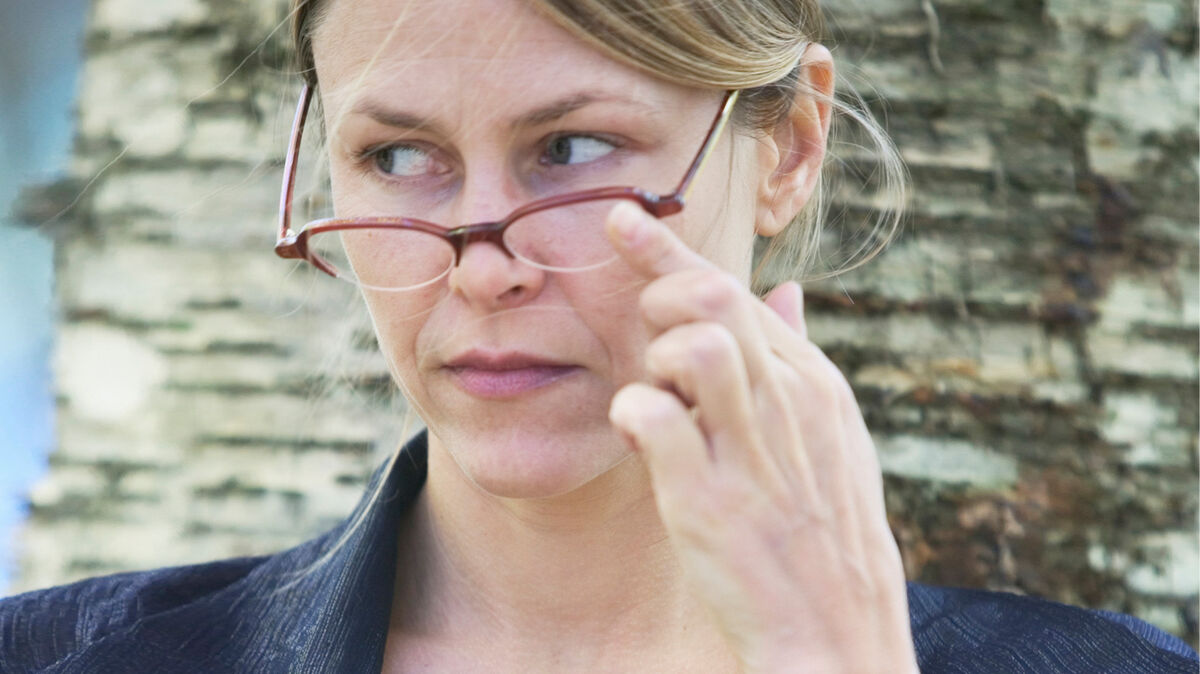
You’re at a party and you spot your best friend’s boyfriend flirting with another woman. You try to play it cool, but when he walks past you, you give him a serious side-eye. Does he get the point? He’d better — a side-eye means business.
What Is a Side-Eye?
Side-eye (also unhyphenated side eye) is a slang term that means “scornfully judge.” It can be a literal side-eye (where you raise your eyebrows and slide your eyes to one side as if something scandalous is happening over there) or it can be figurative, as in “I’m side-eyeing you for that text you just sent.”
Suffice to say, it’s never good to be on the receiving end of a side-eye, but it’s satisfying to send one.
The Origins of "Side-Eye"
While Gen Z may think they invented side-eye (and their usage has made it more popular in recent years), the term side-eye and the concept of silently judging someone is much older than that. The first usage of side-eye comes from over 200 years ago, in the 1797 publication of Remembrancer for Lord's Day Evenings:
Here we come to what calls for the strongest eye-sight, the most steadfast gazing. Our being in Adam has been looked on with a side eye. The subject has provoked dislike; I may almost say, contempt. It is now painful to speak of it.
It also appeared in The Arizona Republican in 1916:
In his mind's-eye he saw himself associating with actor-folk, who invariably side-eye him and whispered among themselves: "That's Alonzo Gubbinsb — frightfully wealthy — just about the real backing of the Frohman ventures — though, of course, Frohman is putting up the name and reputation!"
And in James Joyce’s Ulysses in 1920 (one of the few real words in a section of gibberish):
Language no whit worse than his. Monkwords, marybeads jabber on their girdles: roguewords, tough nuggets patter in their pockets.
Passing now.
A side eye at my Hamlet hat. If I were suddenly naked here as I sit? I am not.
All that to say, if you side-eye people on the regular, you have some esteemed (if not a bit passive-aggressive) company in history.
When Would You Side-Eye Someone?
Ready to lay on the silent judgment? Times when a side-eye is appropriate — nay, necessary — include:
the party guest who is dressed in a designer suit, except that this is a Superbowl party, not a wedding reception
your friend who grabs the foul ball from the kid who actually caught it at the baseball game (make him give it back)
the couple behind you in the movie theater who keeps whispering to each other
the soon-to-be-parents who say “I’ll never let my child …” (fill in the blank)
someone buying 15 items in the 10-items-or-less lane
the person who named it “10-items-or-less lane” and not the “10-items-or-fewer lane”
the driver in the next lane who keeps their turn signal on for two miles
the parents who let their kids run wild in a restaurant (maybe it’s time for one of those things you said you’d never do?)
Take "Side-Eye" Up a Notch
Let’s say that the event you are judging is so bad that a side-eye just won’t cut it. What do you do then? More intense options to ratchet up your judgment include:
furrow your brow - to stare at someone so hard it actually wrinkles your forehead
gorgonize - to give a Medusa-quality death glare
Il Malocchio - Italian for “evil eye” (and possibly a curse)
stare daggers - to stare as if your eyes could stab someone
stink eye - not as deadly, but still pretty bad
Don’t Get Side-Eyed For Your Slang
Save money on that night cream; there are easier ways to appear younger. Learn more slang from the 21st century with: